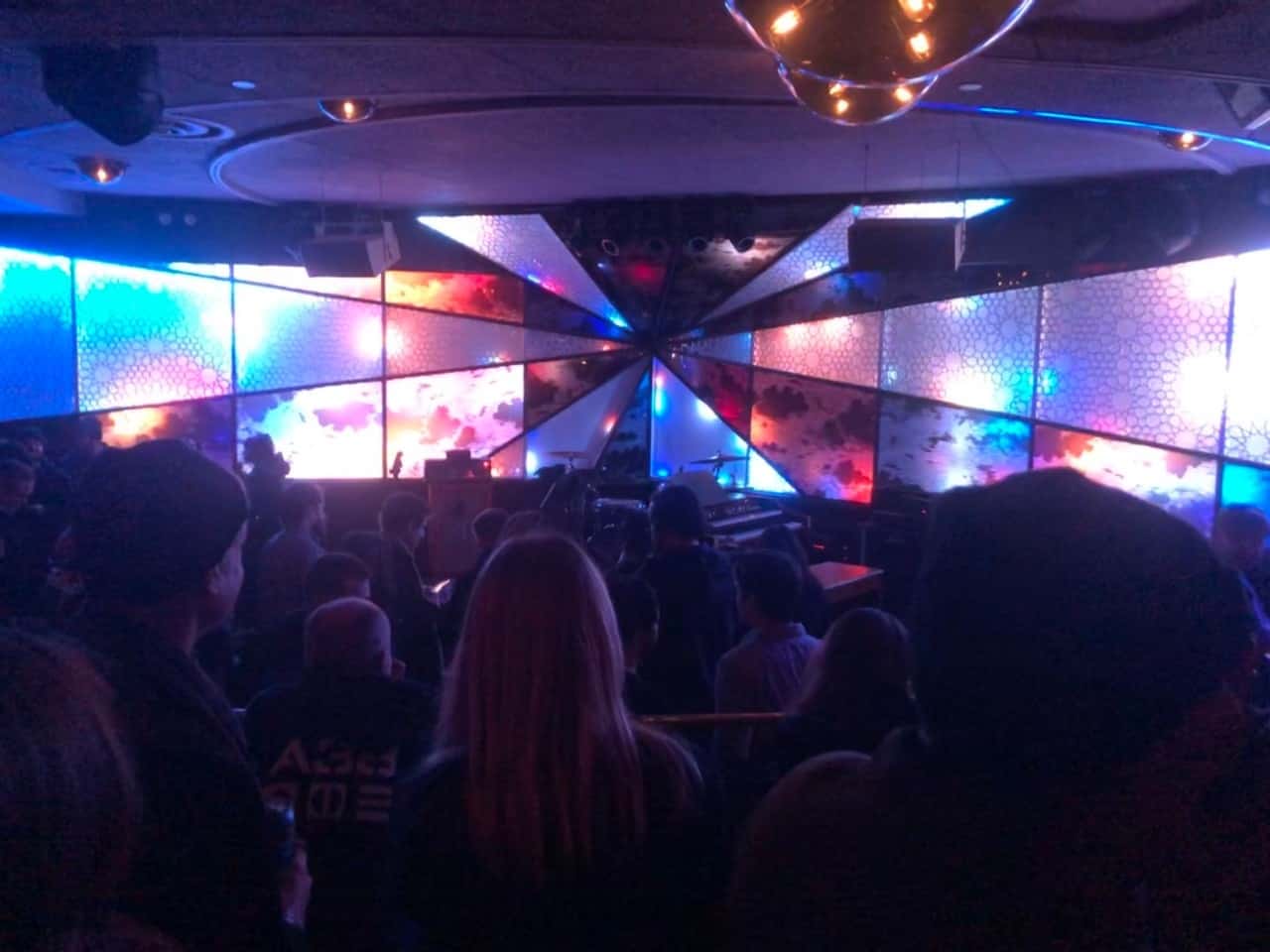John Zorn has been more than just a staple on New York’s creative musical landscape: he’s been a defining factor. Like an institution, flowing from one decade to the next, unchanging, yet always updating, he has been here. Flowing seamlessly between genres, linking half a dozen scenes together in a musical cauldron, he is also an artist defined by his physical location. In his early days he held court at The Kitchen, then moved to the Knitting Factory, and then to Tonic, finally opening his own venue The Stone, which has now folded into the cultural umbrella of The New School. Zorn is now the occasional master of ceremonies at New York’s newest (and deeply welcomed) avant-garde, “downtown” music hub, The Sultan Room, in Bushwick.
And on a below-freezing night in February, his presence after all these years in the New York experimental music community could be felt. As I waited on a line that snaked halfway down the street to get into the sold-out venue, the entire line shivering and huddling from the cold, I reflected on identical scenes from Zorn shows of the past 30 years. A master composer, bandleader, saxophonist, record label owner, and all-around puppet master, Zorn has that cult-of-personality that continuously regenerates fervent fans, from one generation to the next.
In one of his latest groups, however, Zorn wasn’t even playing. Simulacrum features the virtuosic power trio of John Medeski on hammond organ, Matt Hollenberg on guitar, and Kenny Grohowski on drums. While it’s Zorn’s name on the marquee, he was there only to introduce the musicians, give thanks to the venue, and warn everybody about cell phone etiquette. As he said, “This music is for you right here, right now. Not for YoTtube,” setting the stage for in-the-moment musical exploration. Removing himself from performance in the show while still visibly occupying a role in the band, Zorn has rethought the composer’s role: composer as producer. The producer, in this modern age, is the composer, the artist. His vision for the group is complete and total, just like a classical composer dictates every nuance, dynamic marking, or tempo in a classical composition.
The music itself was a typical Zorn show, featuring multi-genre pastiches, blinding virtuosity, and quick-cut changes. While the band tends to fall into the metal genre as a whole, John Medeski’s organ constantly throws in elements of funk, ‘60s lounge, and blues. Grohowski balanced between a jazz swing feel and some of the heaviest blast beats you’ve ever heard, shaking the room from floor to ceiling. Hollenberg’s guitar playing was fine enough – juxtaposing heavy riffs and fluid, blindingly fast jazz lines that felt like merely a way to break up Medeski’s solos. Medeski and Grohowski were the stars, until the last 20 minutes of the show, when Hollenberg dominated the room with massive metal riffs, bending the entire venue into a show-stopping crescendo of volume and metal power.
Simulacrum is a great power trio, for sure, but also falls oddly into the genre of “organ trio.” While it’s hard to stack this band up against the funkiness of Jimmy Smith or Charles Earland (or even the band’s own John Medeski from MMW), it was rather exciting to see this classic instrumentation deliver such a hard-driving, heavy, and occasionally overbearing sound – a great update as to the versatility of this simple instrumentation, and a great addition to the possibilities of what these groups have the possibility of sounding like.









